
Brac Island: A Jewel in the Adriatic Sea
Discover Brac Island in Croatia: Stunning beaches, rich history, and vibrant culture make it a must-visit destination in the Adriatic Sea.
Brac Island in Croatia is a captivating blend of natural beauty, rich history, and vibrant culture. Known for its stunning beaches, the island's coastline is dotted with hidden coves and crystal-clear waters. The most famous of these is Zlatni Rat, often called the Golden Horn, a beach whose unique shape shifts with the tides. Here, you can sunbathe, swim, or engage in various water sports. Beyond the beaches, Brac offers picturesque villages and historic sites. Visit the charming town of Supetar, where you can stroll along the waterfront and explore centuries-old churches. The island's interior is equally enchanting, with olive groves and vineyards offering a taste of local life. Don't miss a trip to Vidova Gora, the highest peak in the Adriatic islands, for breathtaking views. Cultural enthusiasts will appreciate Brac's historical landmarks. The ancient quarries near Pucisca have supplied stone for many famous buildings, including the White House in Washington, D.C. In Skrip, the oldest village on the island, you can explore the Brac Island Museum, which showcases the island's rich heritage. Whether you're seeking relaxation on the beach, adventure in nature, or a journey through history, Brac Island promises an unforgettable experience.
Local tips in Brac Island
- Visit Zlatni Rat early in the morning or late in the afternoon to avoid the crowds and enjoy the best views.
- Rent a bike to explore the island's scenic routes and hidden gems at your own pace.
- Try local delicacies such as Pasticada and Brac cheese at traditional konobas (taverns).
- Take a boat trip to explore nearby islands and enjoy a different perspective of Brac’s coastline.
- Don't forget to bring cash, as some smaller establishments might not accept credit cards.
Brac Island: A Jewel in the Adriatic Sea
Brac Island in Croatia is a captivating blend of natural beauty, rich history, and vibrant culture. Known for its stunning beaches, the island's coastline is dotted with hidden coves and crystal-clear waters. The most famous of these is Zlatni Rat, often called the Golden Horn, a beach whose unique shape shifts with the tides. Here, you can sunbathe, swim, or engage in various water sports. Beyond the beaches, Brac offers picturesque villages and historic sites. Visit the charming town of Supetar, where you can stroll along the waterfront and explore centuries-old churches. The island's interior is equally enchanting, with olive groves and vineyards offering a taste of local life. Don't miss a trip to Vidova Gora, the highest peak in the Adriatic islands, for breathtaking views. Cultural enthusiasts will appreciate Brac's historical landmarks. The ancient quarries near Pucisca have supplied stone for many famous buildings, including the White House in Washington, D.C. In Skrip, the oldest village on the island, you can explore the Brac Island Museum, which showcases the island's rich heritage. Whether you're seeking relaxation on the beach, adventure in nature, or a journey through history, Brac Island promises an unforgettable experience.
When is the best time to go to Brac Island?
Iconic landmarks you can’t miss
Golden Horn Beach
Discover the stunning Golden Horn Beach in Bol, Croatia - a must-visit public beach famous for its unique shape and crystal-clear waters, perfect for relaxation and adventure.

Vidova Gora
Explore Vidova Gora, Brač's highest peak, for breathtaking views and unforgettable hiking experiences in the heart of the Adriatic.

Brač
Discover Brac, Croatia's stunning island paradise with breathtaking beaches, rich history, and vibrant local culture, perfect for every type of traveler.

Bol Port
Explore Bol Port, a stunning Croatian destination on Brač Island, known for crystal-clear waters, beautiful beaches, and vibrant local culture.

Bol port
Discover the charm of Bol Port, a picturesque marina on Brac Island, offering stunning views, vibrant nightlife, and access to captivating beaches.
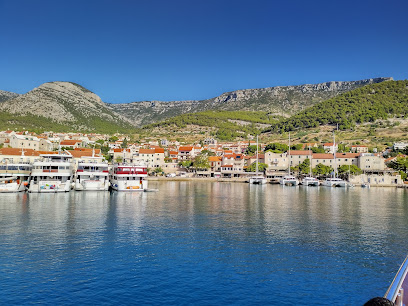
Olive oil museum
Explore the rich tradition of olive oil production at the Olive Oil Museum in Škrip, Brač, where history and flavor come together.

Blaca Hermitage
Explore the serene Blaca Hermitage on Brač Island, a historic memorial offering breathtaking views and a glimpse into Croatia's rich monastic heritage.
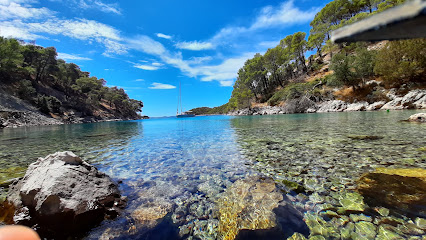
Murvica beach
Experience the serene beauty of Murvica Beach, a hidden gem on Brac Island, perfect for sunbathing, swimming, and serene escapes in nature.

Vidova gora
Experience the breathtaking views and serene beauty of Vidova Gora, the highest peak on Brač Island, a paradise for hikers and nature lovers.

Dominican monastery
Explore the Dominican Monastery in Bol – A serene historical gem offering breathtaking architecture and peaceful gardens in Croatia.
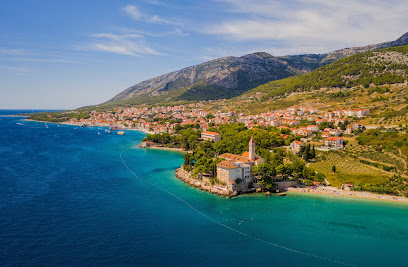
Beach Sumartin
Discover the serene beauty of Beach Sumartin on Brač Island, where crystal-clear waters and sandy shores create the perfect escape.

Martinica Beach
Discover the enchanting Martinica Beach in Bol, where crystal-clear waters and stunning scenery create a perfect getaway in Croatia.
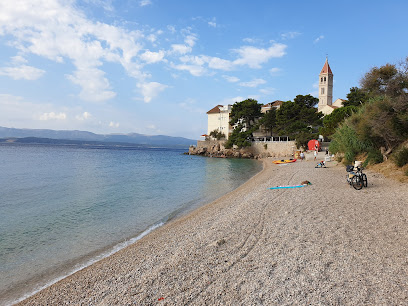
Tri mosta
Experience the serene beauty of Tri mosta, a stunning lido in Supetar, Croatia, perfect for relaxation and sun-filled days by the Adriatic Sea.

Wine Tasting Brac
Explore the exquisite wines of Brac at Wine Tasting Brac, where breathtaking views and local expertise create a unique tasting experience.

Uvala Smrka
Discover tranquility at Uvala Smrka, where the crystal-clear waters and beautiful surroundings create the perfect escape on the Croatian coast.

Unmissable attractions to see
Zipline Croatia
Soar over the breathtaking Cetina River canyon at Zipline Croatia, an adventure sports haven in Omiš offering stunning views and thrilling experiences.

Flarent
Discover the beauty and history of Split with Flarent, your premier tour agency and transportation service in Croatia.

Park prirode Sutivan
Explore the natural wonders of Park prirode Sutivan, where stunning landscapes meet rich biodiversity in the heart of Croatia.
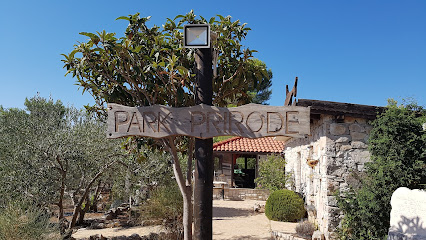
Dominican monastery
Explore the Dominican Monastery in Bol, a historic sanctuary showcasing stunning architecture and a peaceful atmosphere amidst Croatia's beautiful landscapes.

Plaža Milna
Experience the breathtaking beauty and tranquility of Plaža Milna, Croatia's perfect public beach for relaxation and adventure.

Plaža Kaštelet
Experience the beauty and tranquility of Plaža Kaštele, Split's serene public beach where relaxation meets the stunning Adriatic coastline.
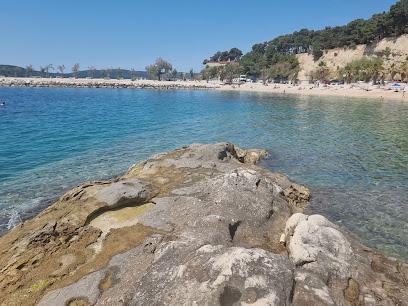
Luna Park Supetar
Experience thrills and laughter at Luna Park Supetar, an amusement park on Brač Island with diverse rides and stunning seaside views.

Split Sea Tours
Experience the breathtaking beauty of the Adriatic Sea with Split Sea Tours, offering unforgettable boat tours and rentals in Split, Croatia.

Puntica Beach
Experience the tranquil beauty of Puntica Beach in Sumartin, a serene Croatian gem perfect for relaxation and adventure.

Uvala Osibova
Explore the tranquil beauty of Uvala Osibova, a hidden gem in Milna, perfect for nature lovers and those seeking relaxation amidst stunning coastal views.

Split by Tuk Tuk - City Tour
Experience the beauty of Split, Croatia, on a Tuk Tuk city tour, blending history and adventure in this UNESCO World Heritage site.

Wine Tasting Brac
Explore the exquisite wines of Brac at Wine Tasting Brac, a winery that offers a unique blend of stunning views, rich flavors, and local heritage.

Buk Omis
Experience the thrill of rafting in Croatia at Buk Omis, where adventure meets stunning natural beauty in Slime.

Beach Mala Milna
Experience the charm of Beach Mala Milna, a stunning public beach in Milna, Croatia, perfect for relaxation and adventure by the Adriatic Sea.

Gecko Tours
Discover the beauty of Split, Croatia, with Gecko Tours—your gateway to unforgettable adventures and cultural experiences.

Essential places to dine
Konoba Kopačina
Experience the flavors of Dalmatia at Konoba Kopačina—where authentic cuisine meets warm hospitality in Donji Humac.

Restoran Punta
Experience authentic Croatian cuisine with stunning Adriatic views at Restoran Punta in Supetar.

Pub BEER GARDEN
Discover Pub BEER GARDEN: A lively pub-restaurant in Supetar offering an exceptional selection of beers and delicious local cuisine amidst beautiful surroundings.
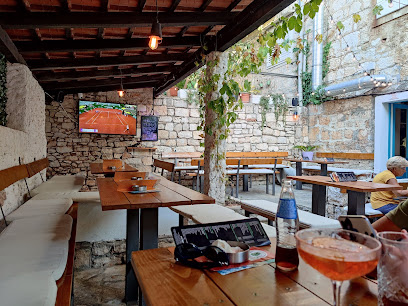
Jure
Discover authentic Croatian cuisine at Jure in Supetar—where every meal is a celebration of flavor and culture.

Ranc Restaurant
Discover exceptional seafood and authentic Croatian cuisine at Ranc Restaurant in Bol – a must-visit for food lovers!

Ribarska Kućica
Discover authentic Croatian flavors at Ribarska Kućica in Bol - where exquisite cuisine meets stunning sea views.

Argento
Experience authentic Croatian flavors at Argento in Bol - where every dish tells a story!

Konoba Gustirna
Discover authentic Croatian flavors at Konoba Gustirna in Postira – where tradition meets culinary excellence amidst stunning island views.

RESTAURANT “PALUTE”
Experience authentic Croatian cuisine at Restaurant Palute in Supetar - a family-friendly destination with diverse menu options and warm hospitality.

Apinelo
Experience authentic Croatian cuisine at Apinelo in Supetar - where local flavors meet warm hospitality.

Mali Raj
Experience authentic Croatian cuisine at Mali Raj in Bol - a perfect blend of taste, ambiance, and stunning sea views.

Konoba Lukin
Experience authentic Mediterranean flavors at Konoba Lukin in Supetar – where fresh seafood meets Croatian hospitality.

Grill Garden Restaurant
Discover the taste of Croatia at Grill Garden Restaurant in Sutivan - where grilled specialties meet stunning coastal views.

Boket78
Discover Boket78 in Bol: A delightful restaurant and wine bar offering exquisite local cuisine and an impressive selection of wines.

Konoba Dinko
Discover authentic Dalmatian cuisine at Konoba Dinko in Bol - where every dish tells a story.

Markets, malls and hidden boutiques
Vidova Gora
Discover the breathtaking views and serene beauty of Vidova Gora, the highest peak on Brač island, Croatia.

Lidl
Explore Lidl in Supetar - your go-to discount supermarket for fresh groceries and local specialties in the heart of Croatia.

Super Konzum
Discover convenience and local flavors at Super Konzum in Supetar, the essential shopping destination for tourists on Brač Island.

Murvica beach
Discover the tranquil beauty of Murvica Beach, a serene public beach in Croatia, perfect for relaxation, swimming, and soaking up the sun.

Caffe Bar Macel
Discover the serene atmosphere of Caffe Bar Macel, a delightful coffee shop in Sutivan offering quality brews and a cozy ambiance for all visitors.

Dm Supetar
Explore Dm Supetar in Supetar for a diverse range of cosmetics and health products, ensuring you look your best during your travels.

Inkognito Bar
Discover the perfect blend of coffee and cocktails at Inkognito Bar in Postira, the charming coastal retreat on Brač Island.
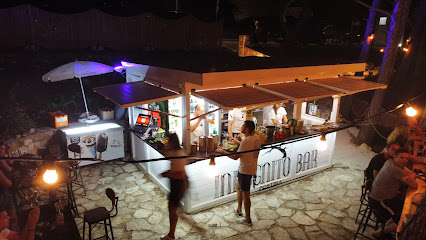
Konzum
Discover the ultimate shopping experience at Konzum in Bol, your go-to destination for groceries and local delights on Brač.

Boutique Camping Bunja
Experience nature's embrace at Boutique Camping Bunja, a serene campground in Supetar, Croatia, perfect for adventurers and relaxation seekers.
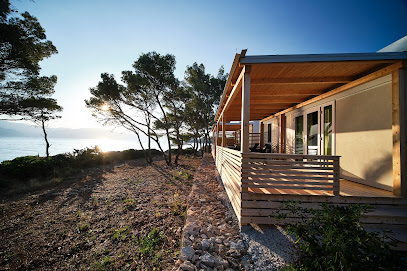
BERICA Ltd.
Explore BERICA Ltd. in Nerežišća for top-quality building materials and expert advice on the beautiful island of Brač.
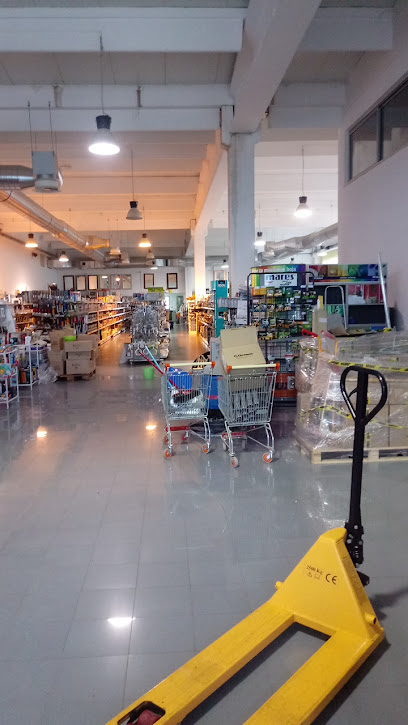
Studenac Market
Experience the local flavors and vibrant atmosphere at Studenac Market, a must-visit grocery store in Bol, Croatia.

Big Blue Sport Bike, E-Bike, Road/Gravel bike rentals & tours
Discover the beauty of Bol with top-notch bike rentals and guided tours at Big Blue Sport, your adventure awaits in Croatia's stunning landscapes!

Brač e-bike
Discover the beauty of Brač Island on two wheels with Brač e-bike, your go-to bicycle rental service for adventure and exploration.

aROMA Gelato Experience
Experience the best gelato in Bol, Croatia, at aROMA Gelato Experience, where every scoop is crafted with love and excellence.

Agroturizam Ranjak
Discover the authentic flavors and traditions of Brač Island at Agroturizam Ranjak, a charming olive oil cooperative and culinary haven.

Essential bars & hidden hideouts
Pub BEER GARDEN
Discover the lively Pub BEER GARDEN in Supetar, where great beer meets vibrant atmosphere and local charm.
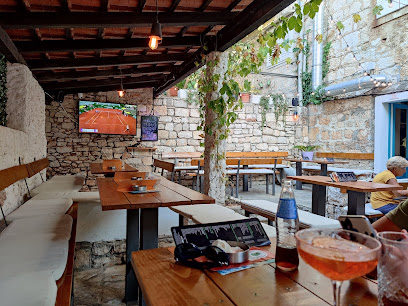
Varadero
Discover the vibrant flavors of Varadero in Bol, where exquisite cocktails and fresh sushi come together in a tropical paradise.

Auro Cocktail bar
Discover the essence of relaxation and sophistication at Auro Cocktail Bar in Bol, where expertly crafted cocktails meet a vibrant atmosphere.

ROSO Bar&Restaurant
Discover the vibrant flavors and lively atmosphere at ROSO Bar & Restaurant in Supetar, where delicious pizza, refreshing cocktails, and nightlife await.
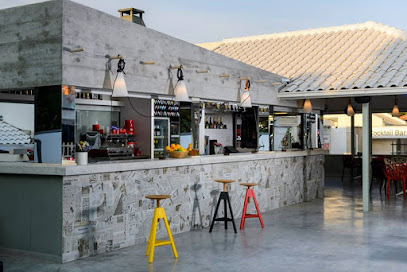
Marinero Cafe and Bar
Experience the lively atmosphere of Marinero Cafe and Bar in Bol, Croatia, where refreshing drinks, delicious snacks, and stunning sea views await.

Caffe Bar Galeb
Discover the vibrant atmosphere of Caffe Bar Galeb in Supetar, where refreshing drinks and stunning views create an unforgettable experience.
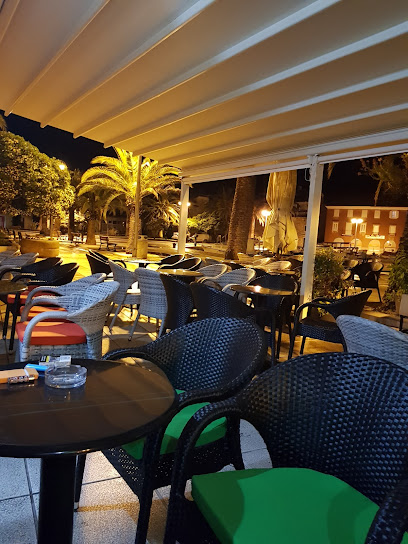
Bistro Vila Marija Splitska Brač
Experience the flavors of Croatia at Bistro Vila Marija, where local ingredients meet culinary creativity in the heart of Supetar.
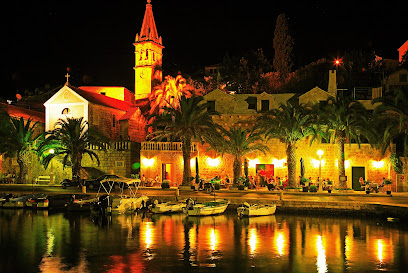
Lovrečina Beach Bar
Experience the tranquil charm of Lovrečina Beach Bar, where stunning sea views meet delightful local flavors in Postira, Croatia.

Caffe Bar Skalinada
Discover the charm of Splitska at Caffe Bar Skalinada, where stunning views meet delightful drinks in a cozy atmosphere.

Cocktail Bar Bolero
Experience the vibrant atmosphere and exquisite cocktails at Cocktail Bar Bolero, your perfect retreat in the heart of Bol, Croatia.

Ured Beach Bar
Experience the vibrant Ured Beach Bar in Bol, Croatia - a perfect spot for brunch and beachside relaxation with stunning sea views.

Beach Bar Nautilius
Discover the laid-back charm of Beach Bar Nautilius in Supetar, where stunning ocean views and refreshing drinks create the perfect seaside escape.
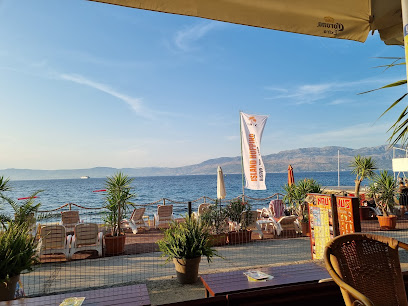
Hakuna Matata Beach Bar
Discover the enchanting Hakuna Matata Beach Bar, where stunning views, refreshing cocktails, and the vibrant spirit of Bol await you.
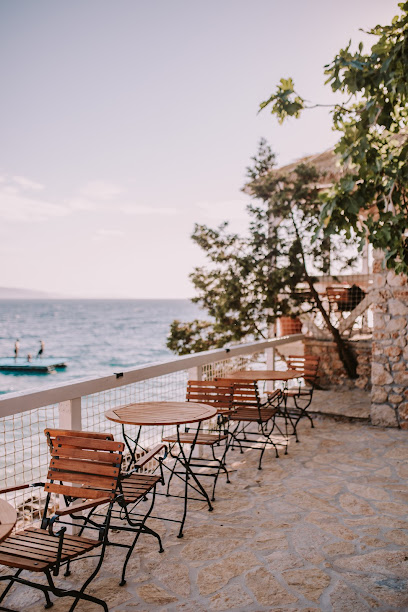
moreistina
Experience the vibrant atmosphere of Moreistina, Sutivan's charming bar offering stunning sea views and delightful drinks for every traveler.
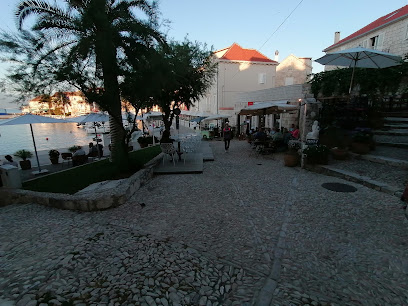
Beachbox
Discover Beachbox, a charming beach bar on Brac Island, where relaxation meets stunning views of the Adriatic Sea.

Local Phrases about Brac Island
-
- HelloBok
[Bohk] - GoodbyeDoviđenja
[Doh-vee-jen-ya] - YesDa
[Dah] - NoNe
[Neh] - Please/You're welcomeMolim
[Moh-leem] - Thank youHvala
[Hvah-lah] - Excuse me/SorryOprostite
[Oh-proh-stee-teh] - How are you?Kako si?
[Kah-koh see] - Fine. And you?Dobro. A ti?
[Doh-bro. Ah tee] - Do you speak English?Govorite li engleski?
[Goh-voh-ree-teh lee ehn-gleh-skee] - I don't understandNe razumijem
[Neh rah-zoo-mee-yem]
- HelloBok
-
- I'd like to see the menu, pleaseMogu li pogledati jelovnik, molim?
[Moh-goo lee poh-gleh-dah-tee yeh-lohv-neek, moh-leem] - I don't eat meatNe jedem meso
[Neh yeh-dehm meh-soh] - Cheers!Živjeli!
[Zhee-vee-yeh-lee] - I would like to pay, pleaseŽelim platiti, molim
[Zheh-leem plah-tee-tee, moh-leem]
- I'd like to see the menu, pleaseMogu li pogledati jelovnik, molim?
-
- Help!Pomoć!
[Poh-mohch] - Go away!Idi odavde!
[Ee-dee oh-dahv-deh] - Call the Police!Pozovite policiju!
[Poh-zoh-vee-teh poh-lee-tsee-yoo] - Call a doctor!Pozovite doktora!
[Poh-zoh-vee-teh dohk-toh-rah] - I'm lostIzgubio sam se
[Eez-goo-bee-oh sahm seh] - I'm illBolestan sam
[Boh-leh-stahn sahm]
- Help!Pomoć!
-
- I'd like to buy...Želim kupiti...
[Zheh-leem koo-pee-tee] - I'm just lookingSamo gledam
[Sah-moh gleh-dahm] - How much is it?Koliko košta?
[Koh-lee-koh koh-shta] - That's too expensiveTo je previše skupo
[Toh yeh preh-vee-sheh skoo-poh] - Can you lower the price?Možete li spustiti cijenu?
[Moh-zheh-teh lee spoo-stee-tee tsee-yeh-noo]
- I'd like to buy...Želim kupiti...
-
- What time is it?Koliko je sati?
[Koh-lee-koh yeh sah-tee] - It's one o'clockJedan je sat
[Yeh-dahn yeh saht] - Half past (10)Pola (deset)
[Poh-lah (deh-set)] - MorningJutro
[Yoo-troh] - AfternoonPopodne
[Poh-pohd-neh] - EveningVečer
[Veh-chehr] - YesterdayJučer
[Yoo-chehr] - TodayDanas
[Dah-nahs] - TomorrowSutra
[Soo-trah] - 1Jedan
[Yeh-dahn] - 2Dva
[Dvah] - 3Tri
[Tree] - 4Četiri
[Cheh-tee-ree] - 5Pet
[Peh-t] - 6Šest
[Shehst] - 7Sedam
[Seh-dahm] - 8Osam
[Oh-sahm] - 9Devet
[Deh-veht] - 10Deset
[Deh-set]
- What time is it?Koliko je sati?
-
- Where's a/the...?Gdje je...
[Gdyeh yeh] - What's the address?Koja je adresa?
[Koh-yah yeh ah-deh-sah] - Can you show me (on the map)?Možete li mi pokazati (na karti)?
[Moh-zheh-teh lee mee poh-kah-zah-tee (nah kahr-tee)] - When's the next (bus)?Kada je sljedeći (autobus)?
[Kah-dah yeh sleh-deh-chee (ow-toh-boos)] - A ticket (to ....)Jednu kartu (do ....)
[Yeh-dnoo kahr-too (doh)]
- Where's a/the...?Gdje je...
History of Brac Island
-
Brac Island's history traces back to the Illyrians, who were the first known inhabitants around 1000 BC. They built fortified settlements known as 'gradinas' on elevated grounds, which served as the island's early defensive structures. The Illyrians were known for their seafaring skills and trade connections across the Adriatic Sea.
-
The Roman Empire annexed Brac Island in the 1st century BC, leaving a lasting legacy. The Romans introduced advanced agricultural techniques, viticulture, and olive cultivation. Roman ruins, including the villa rusticae and early Christian basilicas, still dot the island, showcasing their architectural prowess and the integration of Roman culture into local life.
-
During the medieval period, Brac Island fell under the control of the Venetian Republic in the 15th century. The Venetians fortified the island against Ottoman incursions, leading to the construction of numerous defensive structures, including the medieval town of Skrip, which remains one of the oldest settlements on the island.
-
The Ottoman Empire posed a significant threat to Brac Island in the 16th and 17th centuries. Despite several raids, the island's inhabitants showcased remarkable resilience, rebuilding and fortifying their towns. The fortified churches and monasteries from this period highlight the community's efforts to protect their heritage and way of life.
-
In the 19th century, Brac Island became part of the Austro-Hungarian Empire. This period marked significant economic growth, driven by the island's renowned stone masonry industry. Brac stone was highly prized and used in notable constructions such as the White House in Washington, D.C. The era also saw the establishment of modern infrastructure, including schools and ports.
-
During World War II, Brac Island was occupied by Axis forces. The island became a focal point for the Yugoslav Partisan resistance movement. The local population played a crucial role in supporting the Partisans, and the island witnessed several significant battles. The war left a profound impact on the island's social and economic fabric.
-
Following World War II, Brac Island became part of Yugoslavia and experienced significant reconstruction efforts. The latter half of the 20th century saw the rise of tourism as a major economic driver. The island's natural beauty, combined with its rich historical and cultural heritage, attracted visitors from around the world, transforming Brac into a premier tourist destination in Croatia.
Brac Island Essentials
-
Brac Island is accessible via ferry or catamaran from the mainland city of Split. The ferry journey takes approximately 50 minutes and arrives in Supetar, the island’s main port. There are also direct catamaran services to Bol, a popular tourist destination on the island. During the summer months, additional ferry routes operate from Makarska to Sumartin on Brac. For those flying, the closest international airport is Split Airport, where you can take a bus or taxi to the ferry terminal in Split.
-
Once on Brac Island, public buses connect the major towns and villages. Taxis are available but can be expensive, so it's advisable to agree on a fare before setting off. Renting a car or scooter is a popular option for exploring the island at your own pace. Bicycles can also be rented, providing a more eco-friendly way to navigate the scenic routes. Walking is feasible within towns like Bol and Supetar, where many attractions are easily accessible on foot.
-
The official currency in Croatia is the Croatian Kuna (HRK). Credit cards are widely accepted in hotels, restaurants, and larger shops, but it's advisable to carry some cash, especially in smaller establishments and rural areas. ATMs are available in all major towns like Supetar, Bol, and Milna. Currency exchange services are provided at banks, post offices, and exchange offices.
-
Brac Island is generally a safe destination for tourists. However, like any travel destination, it is advisable to take standard precautions. Avoid walking alone at night in unfamiliar areas and keep an eye on your belongings in crowded places. There are no specific high-crime areas targeting tourists, but petty theft can occur, particularly at beaches and busy tourist spots. Always secure your valuables and be aware of your surroundings.
-
In case of emergency, dial 112 for immediate assistance, which is the European emergency number. The local police station and medical facilities are available in Supetar and other larger towns. It is recommended to have travel insurance that covers medical emergencies. For minor health issues, pharmacies are available in major towns where you can purchase over-the-counter medications.
-
Fashion: Do dress modestly, especially when visiting religious sites. Swimwear is acceptable at beaches but not in towns or restaurants. Religion: Do respect local customs and traditions. Always cover your shoulders and knees when entering churches. Public Transport: Do be courteous and offer your seat to elderly passengers. Don’t eat or drink on public transport. Greetings: Do greet people with a friendly 'Dobar dan' (Good day). A handshake is customary. Eating & Drinking: Do try local delicacies like 'Peka' and 'Vitalac'. Don’t refuse hospitality, as it is considered impolite.
-
To experience Brac Island like a local, visit the local markets in Supetar and Bol where you can buy fresh produce and traditional goods. Engage with locals, as they are often friendly and willing to share stories about the island's history and culture. Don’t miss visiting the ancient olive groves and the stone-cutting school in Pucisca. For a unique experience, hike up Vidova Gora, the highest peak on the Adriatic islands, for breathtaking views. Try the locally produced olive oil and wine, which are some of the island’s specialties.
Nearby Cities to Brac Island
-
Things To Do in Split
-
Things To Do in Makarska
-
Things To Do in Trogir
-
Things To Do in Mostar
-
Things To Do in Jajce
-
Things To Do in Dubrovnik
-
Things To Do in Zenica
-
Things To Do in Zadar
-
Things To Do in Trebinje
-
Things To Do in Sarajevo
-
Things To Do in Banja Luka
-
Things To Do in Bihac
-
Things To Do in Herceg Novi
-
Things To Do in Perast
-
Things To Do in Tivat













